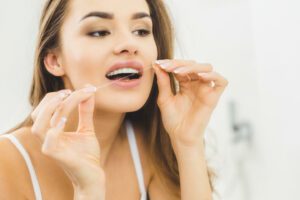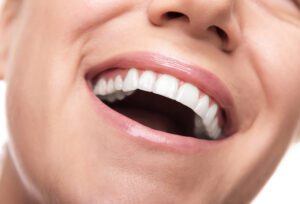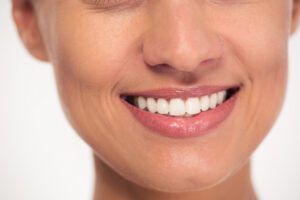Everyone loves and wants white, sparkling teeth. In fact, people’s desire for whiter teeth dates back to the 1300s, when tooth whitening was the second most requested dental service other than extraction. But what causes our teeth to lose their sheen? There are numerous reasons our teeth change colour, appear darker, or develop white or dark spots.
Reasons for Tooth Discolouration
Pigments from foods, drinks, and smoking
Foods such as tea, coffee, fruit juices, dark vinegar and sauces, red wine, berries, candy, many fruits and vegetables, and smoking can cause tooth stains. The most common colouration from foods and smoking is yellow or brown stains.
Medications and medical conditions
Medicines such as tetracycline antibiotics can cause blue-grey or green-grey bands on the teeth. Overexposure to fluoride results in a chalky white glazed surface with multiple yellow, brown, or black spots. Health conditions such as severe jaundice may result in pigment deposits inside the teeth.
Ageing
Aging is a common cause of discolouration. The tooth darkens and becomes more opaque from inside and the enamel becomes thinner, resulting in a distinctly darker hue over time.
Tooth Decay
Tooth decay or dental caries produces stains ranging from an opaque white “halo,” a greyish tinge, or brown-to-black spots as they progress.
Dental Restorations / Fillings
Metallic restorations, particularly old silver amalgams, cause stains on the teeth in addition to the shadow they may cast through the tooth walls.
Dental Trauma
Direct trauma can kill the tooth pulp or disturb the development of teeth. It can cause brownish or greyish stains which continue darkening until treated or masked.
Chromogenic Bacteria
These bacteria cause orange, yellow, and black lines along the gum margins, which tend to recur frequently but are removed easily during professional dental cleanings.
Prevention of Tooth Discolouration
Below are some simple methods to minimize tooth discolouration in our day-to-day life.
Use A Straw:
Using a straw when drinking any pigmented liquid effectively reduces its effect on teeth.
Rinse Your Teeth:
Rinsing the mouth with water immediately after having a pigmented food/drink will help wash them away and reduce the staining they may cause.
Brushing & Flossing:
Regular brushing and flossing is an effective method to keep dental stains at bay. Occasional use of toothpaste with whitening agents is helpful. Flossing helps clean the tightest spots, not easily accessible by the toothbrush.
Treatments of Tooth Discolouration
Careful assessment of the cause of staining ensures that the chosen treatment option brightens the teeth effectively. The variety of options available include the following.
Bleaching/whitening
Bleaching can be done at home or in-office, for either non-vital or vital teeth. At-home treatment for a non-vital tooth involves placing material inside it to lighten it over a few days. The in-office technique achieves instant results as the bleaching agent is applied directly to the teeth and activated by heat or light if required. For At-home bleaching of vital teeth, the bleaching agent is applied in custom-fit trays worn while sleeping or during the day. The take-home method is an effective method to maintain the brightness over time. These techniques are generally painless, cause little to no residual sensitivity, and are cost-effective.
Resin Infiltration Technique
Resin Infiltration is a relatively new technique to lighten white or brown spots on the teeth by applying layers of liquid dental resin over many steps. It masks the spots by modifying the reflective properties of the enamel. Results may vary with the type and extent of stains but are immediate and last a few years. 1-2 applications may be required. This procedure is painless, low cost, and minimally invasive.
Composite Veneers/Bonding
Bonding involves using dental filling material to mask the stained areas of teeth and improve their colour and shape. The results are long-lasting when combined with good oral hygiene. Composite veneers may need touch-ups or replacements after a few years.
Dental Porcelain Veneers
Porcelain veneers are the gold-standard treatment to improve the aesthetics of the teeth. A thin shell of porcelain material is applied over the entire front of a tooth to change the colour, shape, size, or alignment. Porcelain Veneers are quite long-lasting when combined with good maintenance and home care.
By recognizing the likely cause of teeth stains, we at Dural Dental Practice can offer the best treatment to help brighten your smile.





